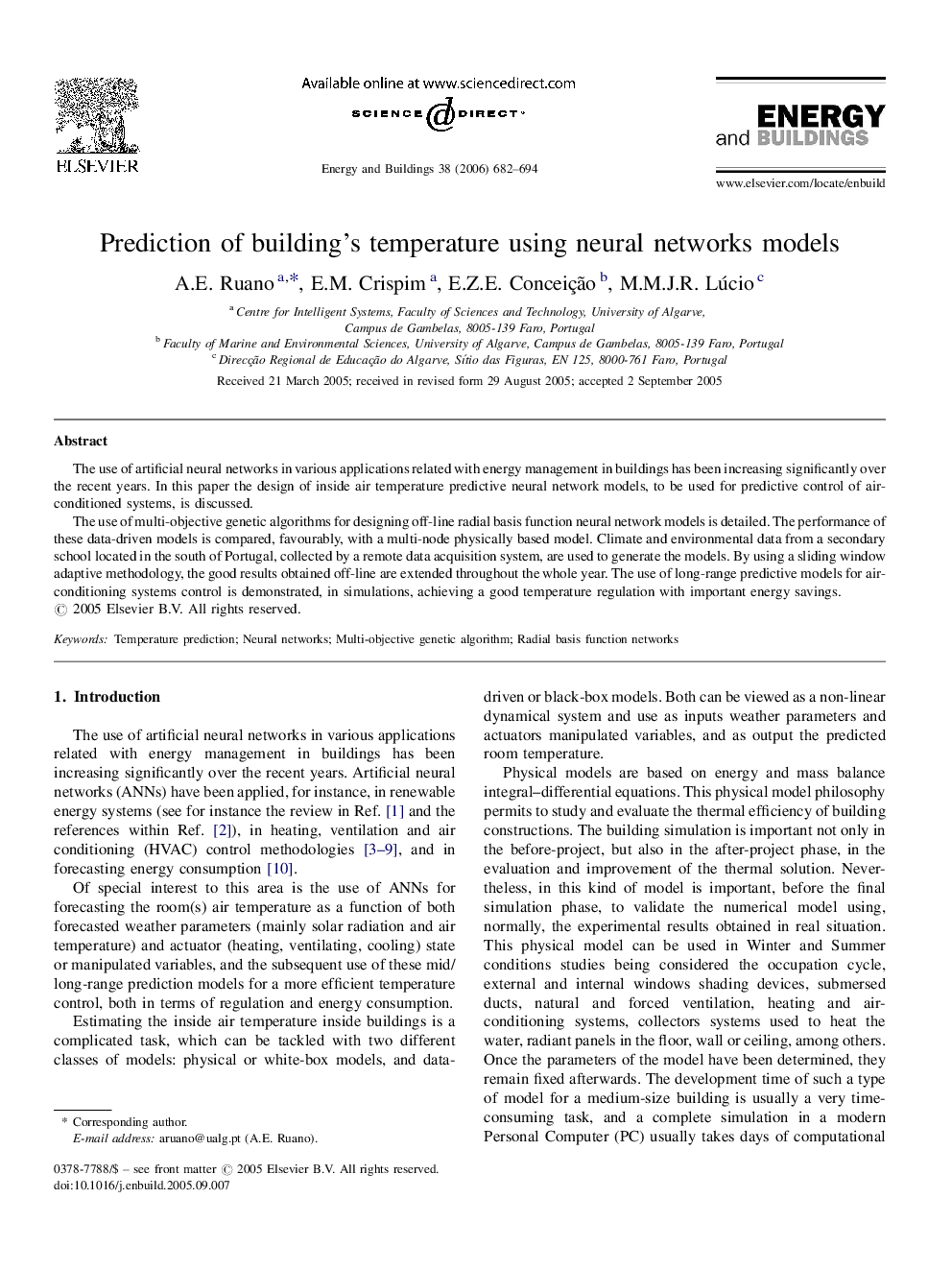| Article ID | Journal | Published Year | Pages | File Type |
|---|---|---|---|---|
| 265523 | Energy and Buildings | 2006 | 13 Pages |
The use of artificial neural networks in various applications related with energy management in buildings has been increasing significantly over the recent years. In this paper the design of inside air temperature predictive neural network models, to be used for predictive control of air-conditioned systems, is discussed.The use of multi-objective genetic algorithms for designing off-line radial basis function neural network models is detailed. The performance of these data-driven models is compared, favourably, with a multi-node physically based model. Climate and environmental data from a secondary school located in the south of Portugal, collected by a remote data acquisition system, are used to generate the models. By using a sliding window adaptive methodology, the good results obtained off-line are extended throughout the whole year. The use of long-range predictive models for air-conditioning systems control is demonstrated, in simulations, achieving a good temperature regulation with important energy savings.
